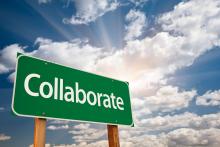Citrix systems is acquiring Cloud.com and, in the process, furthering its plans in cloud computing. Cloud.com brings some marquee customers and a well-regarded automation and orchestration platform for Citrix to build upon. Citrix has pledged to continue to support OpenStack and provide integration with the OpenStack API by year end. The real benefit to Citrix however, is that with the technology acquired from Cloud.com, the company can further its virtual desktop infrastructure (VDI) and application streaming capabilities, which is Citrix's core strength.
Citrix has been moving to cloud-like architectures for several years, but the initiatives have largely been to support Citrix's core XenApp for virtual desktops and application streaming--a strategy that the company hasn't wavered from for long. This includes acquisitions of Netscaler in 2005, Xensource in 2007, VMlogix in 2010 and Kaviza in 2011.
Cloud.com takes Citrix in a new direction. Cloud.com supports Citrix Xen and VMware's vSphere, and the company has plans to support Microsoft's Hyper-V and System Center. In addition, Citrix is committed to OpenStack support, which it reinforced at Synergy with Project Olympus, and will be implementing the OpenStack API by year end.
Acquiring Cloud.com isn't Citrix's first turn at the orchestration dance. In 2008, Citrix announced Workflow Studio, an orchestration system that brought together XenServer and NetScaler to automatically provision and de-provision servers based on demand. WorkflowStudio also included an SDK that could be integrated with other systems, and was one of the first automation and orchestration systems available. However, it was subsumed into other Citrix products, including XenApp and XenDesktop, for automating tasks like self-service enterprise applications and managing workflows.
It is unlikely that Citrix will be able to entirely subsume Cloud.com into its core product lines like it has done with other acquisitions, but we suspect that Cloud.com is going to form the basis for other acquisitions or initiatives that do align closely with VDI and remote applications, such as platform-as-a-service environments. PaaS environments provide robust application frameworks that allow applications to scale as needed and on demand, and require an automation and orchestration system to work effectively. Given Citrix's long history of driving VDI and application streaming to desktops, laptops and, now, mobile devices such as smartphones and tablets using Citrix Receiver, a PaaS would allow Citrix to offer a product that breaks the dependence on fat, server-based applications streamed to so-called thin clients.








